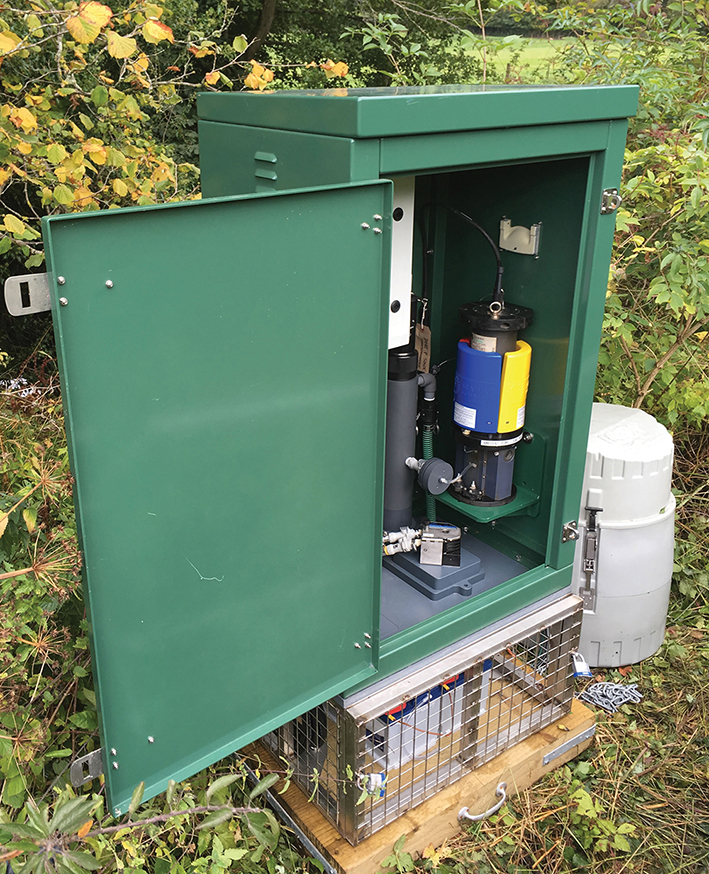The science behind nutrient pollution in rivers is still poorly understood despite the fact that nitrate and phosphate concentrations in UK rivers are mostly unacceptable. Key to improving our understanding is high-resolution monitoring across a broad spectrum of rivers. Below, Nigel Grimsley from OTT Hydromet describes relatively new technologies that have overcome traditional barriers to the continuous monitoring of nutrients.
Phosphates and nitrates support the growth of aquatic organisms. However, under certain conditions, such as warm, sunny weather and slow moving water, elevated nutrient concentrations can promote the growth of nuisance phytoplankton causing algal blooms (eutrophication), which harm aquatic ecology, making water unsuitable for recreation and more expensive to treat for drinking purposes.
In its State of the Environment report, February 2018, the Environment Agency said: Unacceptable levels of phosphorus in over half of English rivers, usually due to sewage effluent and pollution from farm land, chokes wildlife as algal blooms use up their oxygen. Groundwater quality is currently deteriorating. This vital source of drinking water is often heavily polluted with nitrates, mainly from agriculture. The EU Water Framework Directive (WFD) requires the UK to achieve ‘good status’ of all water bodies by 2015.
Dr Mike Bowes from the Centre for Ecology & Hydrology has published research, with others, in which the effects of varying soluble reactive phosphate (SRP) concentrations on periphyton growth rate (mixture of algae and microbes) were determined in 9 different rivers from around the UK. In all of these experiments, significantly increasing SRP concentrations in the river did not increase periphyton growth rate or biomass. This indicates that in most UK rivers, phosphorus concentrations are in excess, and therefore the process of eutrophication is not necessarily caused by intermittent increases in SRP.
Traditional monitoring of upland streams has relied on sampling for lab analysis and research has shown that upland streams are less impaired by nutrient pollution than lowland rivers, but because of their size and limited dilution capacity they are more susceptible. Sampling for laboratory analysis can be a costly and time-consuming activity, particularly at upland streams in remote locations with difficult access. In addition, spot sampling risks missing concentration spikes. Continuous monitoring is therefore generally preferred, but historically this has been difficult to achieve because of a requirement for frequent re-calibration and mains power.
High resolution SRP monitoring has been made possible with the launch by OTT Hydromet of the the ‘HydroCycle PO4’ which is a battery-powered wet chemistry analyser for the continuous analysis of SRP. Typically, the HydroCycle PO4 is located in the river for monitoring purposes, but recent work by the Environment Agency has deployed it in a flow-through chamber for measuring extracted water.
The HydroCycle PO4 methodology is based on US EPA standard methods, employing pre-mixed, colour coded cartridges for simple reagent replacement in the field. Weighing less than 8kg fully loaded with reagents, it is quick and easy to deploy, even in remote locations. The instrument has an internal data logger, and in combination with telemetry, provides operators with near real-time access to monitoring data for SRP. Data qualityis underpinned by QA/QC processing in conjunction with an on-board NIST standard, delivering scientifically defensible results.
The National Laboratory Service Instrumentation team (NLSI) provides support to all high resolution water quality monitoring activities undertaken across the EA. Technical Lead Matt Loewenthal says: “We provide the Agency and commercial clients with monitoring systems and associated equipment to meet their precise needs. This includes nutrient monitoring, which is a major interest for everyone involved with water resources.”
Matt’s team has developed water quality monitoring systems that deliver high resolution remote monitoring with equipment that is quick and easy to deploy. There are two main options. The ‘green box’ is a fully instrumented cabinet that can be installed adjacent to a water resource, drawing water and passing it through a sensor chamber. Each system is fitted with telemetry so that real-time data is made instantly available to users on the cloud. Matt says: “The HydroCycle PO4 is currently the only system that can be integrated with all of our remote monitoring systems. Because it’s portable, and runs on 12 volts, it has been relatively easy to integrate into our modular monitoring and telemetry systems.”
Excessive nitrate levels can also have a significant impact on water quality – nitrates are highly mobile and can contaminate groundwater, with serious consequences for wells and drinking water treatment. Nitrate concentrations are therefore of major interest to the EA, but traditional monitoring technology has proved inadequate for long-term monitoring because of a frequent recalibration requirement. To address this, OTT developed the SUNA V2, which is an optical nitrate sensor, providing high levels of accuracy and precision in both freshwater and seawater.
The NLSI has evaluated the SUNA V2 in well water and Matt says: “It performed well – we took grab samples for lab analysis and the SUNA data matched the lab data perfectly. We are therefore excited about the opportunity this presents to measure nitrate continuously, because this will inform our understanding of nitrate pollution, as well as the relationship between groundwater and surface water.”
In summary, improved instrumentation for high resolution monitoring, will facilitate a better understanding of the sources and effects of nutrient pollution, and thereby enable the implementation of effective prevention and mitigation strategies.




